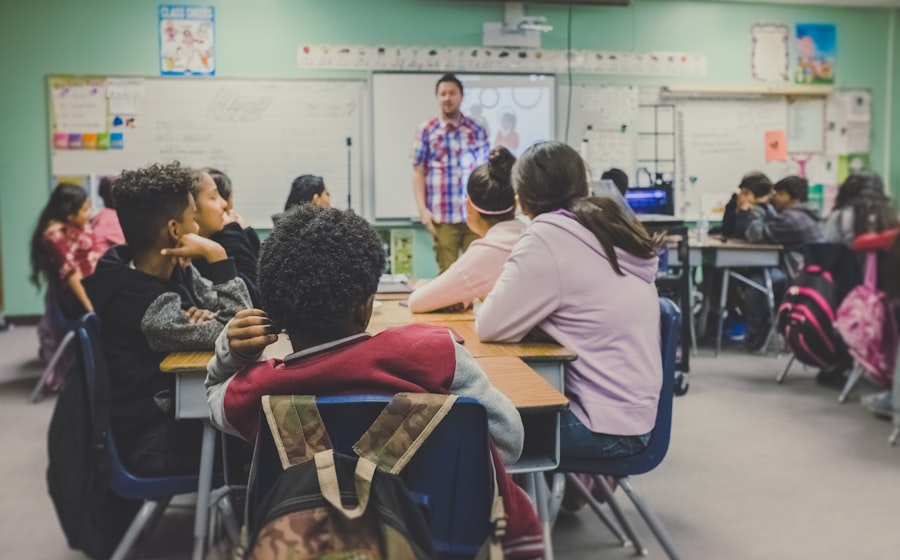As we delve into the realm of education, it becomes increasingly clear that understanding the importance of special needs training is paramount for educators. The diverse spectrum of special needs encompasses a variety of conditions, including autism, ADHD, dyslexia, and Down syndrome, among others. Each of these conditions presents unique challenges and learning styles that require tailored approaches.
By equipping ourselves with the knowledge and skills necessary to support these students, we not only enhance their educational experience but also foster an inclusive environment where every child can thrive. This understanding is not merely an academic exercise; it is a moral imperative that underscores our commitment to equity in education. Moreover, special needs training empowers us to recognize and appreciate the strengths that each child brings to the classroom.
It encourages us to shift our focus from what students cannot do to what they can achieve when provided with the right support. This perspective is crucial in cultivating a positive learning atmosphere where all students feel valued and understood. By embracing this training, we are better prepared to implement strategies that promote engagement and participation among special needs students, ultimately leading to improved academic outcomes and social integration.
Our commitment to understanding these principles lays the foundation for a more compassionate and effective educational system.
Incorporating Special Needs Curriculum into Teacher Education Programs
Incorporating a special needs curriculum into teacher education programs is essential for preparing future educators to meet the diverse needs of their students. This integration should not be viewed as an add-on but rather as a core component of teacher training. By embedding special needs education into the curriculum, we ensure that all aspiring teachers gain a comprehensive understanding of various disabilities and the pedagogical strategies that can be employed to support these learners.
This foundational knowledge equips us with the tools necessary to create inclusive classrooms where every student has the opportunity to succeed. Furthermore, a well-rounded special needs curriculum should encompass both theoretical knowledge and practical applications. We must engage in discussions about the legal frameworks surrounding special education, such as the Individuals with Disabilities Education Act (IDEA), while also exploring evidence-based practices that have proven effective in diverse educational settings.
By fostering an environment where future educators can collaborate and share experiences, we create a community of practice that values continuous learning and improvement. This holistic approach not only enhances our understanding of special needs education but also prepares us to advocate for our students’ rights and needs in various educational contexts.
Providing Hands-On Experience with Special Needs Students

Providing hands-on experience with special needs students is a critical aspect of teacher training that cannot be overlooked. Theoretical knowledge alone is insufficient; we must engage directly with students who have diverse learning needs to truly understand their experiences and challenges. This practical exposure allows us to develop empathy and insight into the unique ways in which these students interact with their environment and peers.
By observing and participating in real-life educational settings, we gain invaluable skills that enhance our ability to adapt our teaching methods to meet individual needs. Additionally, hands-on experience fosters collaboration between future educators and special education professionals. By working alongside experienced teachers and specialists, we can learn effective strategies for differentiation, behavior management, and communication techniques tailored to special needs students.
This collaborative approach not only enriches our training but also builds a network of support that we can rely on throughout our careers. Ultimately, by prioritizing hands-on experience, we cultivate a generation of educators who are not only knowledgeable but also compassionate advocates for their students.
Utilizing Technology in Special Needs Training
In today’s digital age, utilizing technology in special needs training has become increasingly important. Innovative tools and applications can significantly enhance our ability to support students with diverse learning needs. For instance, our COCO THINKS and COCO MOVES apps are designed specifically for children with special needs, providing engaging educational content that caters to various learning styles.
These apps offer interactive activities that promote cognitive development, social skills, and physical movement, making learning both fun and effective. By integrating such technology into our training programs, we equip ourselves with modern resources that can transform the educational experience for special needs students. Moreover, technology serves as a bridge between educators and students, facilitating communication and collaboration in ways that were previously unimaginable.
For instance, assistive technologies can help students with speech or language difficulties express themselves more effectively, while visual aids can support those with autism in understanding social cues. As we embrace these technological advancements, we must also remain mindful of the importance of training educators on how to effectively implement these tools in their classrooms. By doing so, we ensure that technology becomes an integral part of our teaching practice rather than a mere supplement.
Collaboration with Special Education Professionals
Collaboration with special education professionals is essential for creating an effective support system for special needs students. As educators, we must recognize that we cannot do this work alone; partnering with specialists such as speech therapists, occupational therapists, and behavior analysts enriches our understanding of the diverse needs within our classrooms. These professionals bring a wealth of knowledge and expertise that can inform our teaching practices and help us develop individualized strategies for our students.
By fostering strong relationships with these specialists, we create a comprehensive support network that benefits both educators and students alike. Furthermore, collaboration extends beyond just working with specialists; it also involves engaging families in the educational process. Parents and caregivers possess invaluable insights into their children’s strengths, challenges, and preferences.
By actively involving them in discussions about their child’s education, we can create a more holistic approach that addresses individual needs effectively. This partnership not only empowers families but also reinforces the idea that education is a shared responsibility among all stakeholders. Together, we can create an inclusive environment where every child has the opportunity to succeed.
Addressing the Individual Needs of Special Education Students

Addressing the individual needs of special education students requires a deep understanding of each child’s unique strengths and challenges. We must recognize that no two students are alike; therefore, our approach must be tailored to meet their specific requirements. This individualized attention is crucial for fostering a sense of belonging and ensuring that every student feels valued within the classroom community.
By employing differentiated instruction techniques, we can adapt our teaching methods to accommodate various learning styles and abilities, ultimately promoting greater engagement and success. Additionally, it is essential to regularly assess and monitor each student’s progress to ensure that our interventions are effective. This ongoing evaluation allows us to make informed decisions about instructional strategies and necessary adjustments to support each child’s growth.
By maintaining open lines of communication with families and collaborating with other professionals involved in the child’s education, we can create a comprehensive support plan that addresses their evolving needs over time. Our commitment to addressing individual needs not only enhances academic outcomes but also fosters emotional well-being and self-confidence among special education students.
Promoting Inclusive Classroom Environments
Promoting inclusive classroom environments is fundamental to ensuring that all students feel welcome and supported in their learning journey. As educators, we have a responsibility to create spaces where diversity is celebrated and differences are embraced. This involves implementing practices that encourage collaboration among all students, regardless of their abilities or backgrounds.
By fostering an atmosphere of respect and understanding, we empower our students to learn from one another and develop essential social skills that will serve them well beyond the classroom. Moreover, inclusive environments require us to be proactive in addressing potential barriers to participation. This may involve modifying classroom layouts to accommodate mobility challenges or providing additional resources for students who may struggle with traditional learning methods.
By being attentive to these factors, we demonstrate our commitment to creating equitable opportunities for all learners. Additionally, promoting inclusivity extends beyond physical adjustments; it also involves cultivating a culture of empathy and kindness among students. Through intentional discussions about diversity and acceptance, we can instill values that will shape our students’ interactions both inside and outside the classroom.
Evaluating the Effectiveness of Special Needs Training in Teacher Education Programs
Evaluating the effectiveness of special needs training in teacher education programs is crucial for ensuring that future educators are adequately prepared to meet the diverse needs of their students. This evaluation process should involve multiple stakeholders, including current educators, special education professionals, and even former students who have experienced the impact of these training programs firsthand. By gathering feedback from various perspectives, we can identify strengths and areas for improvement within our training curricula.
Furthermore, ongoing assessment should focus on measuring the long-term outcomes of special needs training on student success in inclusive classrooms. This may involve tracking academic performance, social integration, and overall well-being among special education students taught by graduates of these programs. By analyzing this data, we can make informed decisions about necessary adjustments to our training approaches and ensure that we are equipping future educators with the skills they need to create positive learning environments for all students.
Ultimately, this commitment to evaluation reflects our dedication to continuous improvement in special needs education and reinforces our role as advocates for all learners.
For educators and program developers interested in enhancing their understanding of special needs education, it is crucial to explore various aspects of care and support for individuals with disabilities. A related article that delves into the evaluation of speech therapy for adults can be a valuable resource. This article provides insights into therapeutic strategies and outcomes, which can be integral for teacher education programs focusing on special needs training. To read more about this, you can visit the article Valutazione della Terapia Logopedica per Adulti. This information can help educators develop a more comprehensive approach to addressing the diverse needs of all students.




